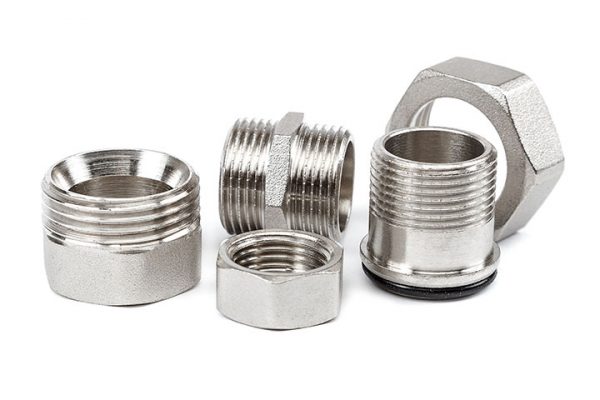With performance benefits over traditional electrolytic nickel, electroless nickel plating does not require an electric current to deposit metals onto components. Instead, parts are bathed in a solution that triggers chemical reactions to bind the nickel to the components with uniform coverage and thickness.
The process is especially advantageous when plating irregularly shaped objects, holes, recesses, internal surfaces, valves or threaded holes. Electroless nickel plating is more corrosion resistant than traditional electrolytic nickel and because it is less magnetic, it is a better choice for various electronic components.
| Specifications | Classifications |
| Mil-C-26074 |
Class 1 – With no subsequent heat treatment Class 2 – Heat treated to achieve required hardness Class 3 – Aluminum alloys non heat treatable, beryllium alloys processed to improve adhesion of the nickel deposit Class 4 – Aluminum alloys heat treatable, processed to improve adhesion of the nickel deposit Grade A – 0.0010 inch Minimum deposit thickness Grade B – 0.0005 inch Minimum deposit thickness Grade C – 0.0015 inch Minimum deposit thickness |
| ASTM B733-04 |
Type I – no requirement of phosphorus Type IV – 5-9% phosphorus (medium) A medium phosphorus content electroless nickel is used to obtain a bright appearance while retaining magnetic, solder-ability and moderate corrosion resistance. SC0 – Minimum thickness 0.000004″ SC1 – Light Service 0.0002″ Minimum SC2 – Mild Service 0.0005″ Minimum SC3 – Moderate Service 0.001″ Minimum SC4 – Severe Service 0.003″ Minimum Class 1 – As deposited no heat treatment Class 2 – Heat treatment at 250* to 400* C to produce a Minimum hardness of 850 HK100 Class 3 – Heat treatment at 180* to 200* C for 2 to 4 hours to improve coating adhesion and to provide hydrogen embrittlement relief Class 4 – Heat treatment at 120* to 130* C for at least 1 hour of heat treatable (age-hardened) aluminum alloys and carburized steel to increase adhesion Class 5 – Heat treatment at 140* to 150* C for non age-hardened aluminum alloys and beryllium to improve coating adhesion Class 6 – Heat treatment at 300 to 320°C (572-608°F) for at least 1-hr to improve coating adhesion for titanium alloys. |
| AMS-2404 (supersedes AMS-Mil-26074) |
Class 1: No heat treatment. Class 2: Heat treatment 260 to 400°C (500-752°F) to produce minimum hardness of 850 HK100 Class 3: Heat treatment 180 to 200°C (356-392°F) 2 to 4-hr to improve coating adhesion on steel and provide hydrogen embrittlement relief Class 4: Heat treatment 120 to 130°C (248-266°F) at least 1-hr to increase adhesion of heat-treatable (age-hardened) aluminum alloys (such as 7075) and carburized steel Class 5: Heat treatment 140 to 150°C (284-302°F) at least 1-hr to improve coating adhesion for aluminum, non age-hardened aluminum alloys, copper, copper alloys and beryllium Class 6: Heat treatment 300 to 320°C (572-608°F) at least 1-hr to improve coating adhesion for titanium alloys Grade A – 0.0010-inch minimum deposit thickness Grade B – 0.0005-inch minimum deposit thickness Grade C – 0.0015-inch minimum deposit thickness |
- Electroless nickel is RoHS compliant.
- Corrosion testing according to ASTM B117 available by request.
- Detailed metal masking solutions are available to ensure that finishes are applied precisely.


